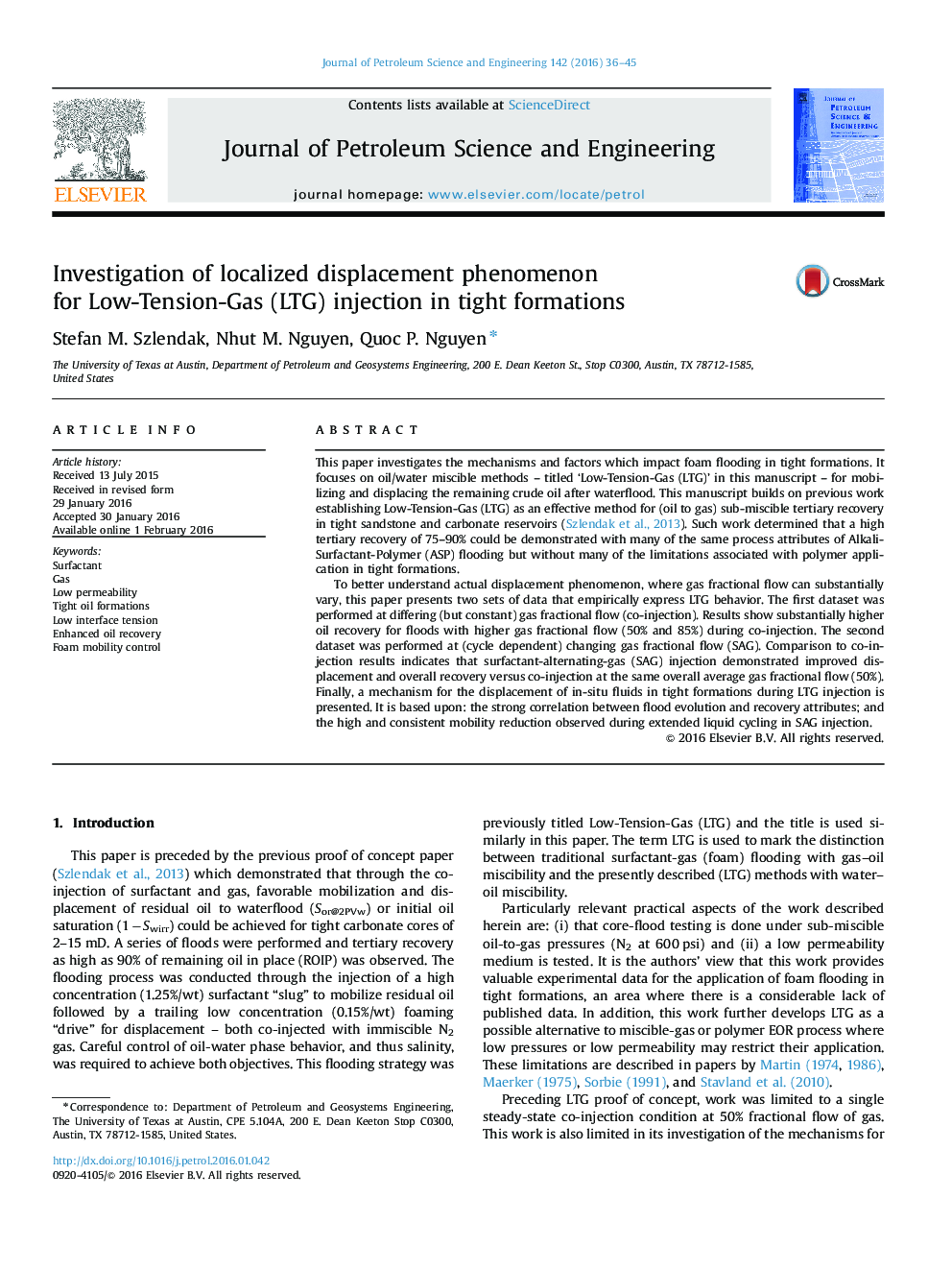| Article ID | Journal | Published Year | Pages | File Type |
|---|---|---|---|---|
| 1754548 | Journal of Petroleum Science and Engineering | 2016 | 10 Pages |
•A method for near-miscible flooding for enhanced oil recovery in tight oil formations.•Gas fractional flow varied through co-injection and surfactant-alternating gas.•High oil recovery achieved (>90%), correlated to moderate gas fractional flow (>50%).•Strong mobility reduction and stable mobility control during gas-surfactant injection.•Concept for oil displacement associated with emulsification and foaming proposed.
This paper investigates the mechanisms and factors which impact foam flooding in tight formations. It focuses on oil/water miscible methods – titled ‘Low-Tension-Gas (LTG)’ in this manuscript – for mobilizing and displacing the remaining crude oil after waterflood. This manuscript builds on previous work establishing Low-Tension-Gas (LTG) as an effective method for (oil to gas) sub-miscible tertiary recovery in tight sandstone and carbonate reservoirs (Szlendak et al., 2013). Such work determined that a high tertiary recovery of 75–90% could be demonstrated with many of the same process attributes of Alkali-Surfactant-Polymer (ASP) flooding but without many of the limitations associated with polymer application in tight formations.To better understand actual displacement phenomenon, where gas fractional flow can substantially vary, this paper presents two sets of data that empirically express LTG behavior. The first dataset was performed at differing (but constant) gas fractional flow (co-injection). Results show substantially higher oil recovery for floods with higher gas fractional flow (50% and 85%) during co-injection. The second dataset was performed at (cycle dependent) changing gas fractional flow (SAG). Comparison to co-injection results indicates that surfactant-alternating-gas (SAG) injection demonstrated improved displacement and overall recovery versus co-injection at the same overall average gas fractional flow (50%). Finally, a mechanism for the displacement of in-situ fluids in tight formations during LTG injection is presented. It is based upon: the strong correlation between flood evolution and recovery attributes; and the high and consistent mobility reduction observed during extended liquid cycling in SAG injection.
